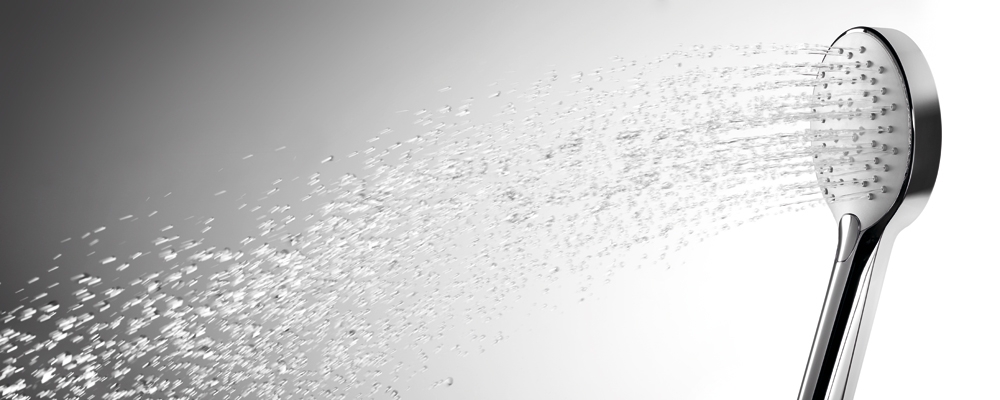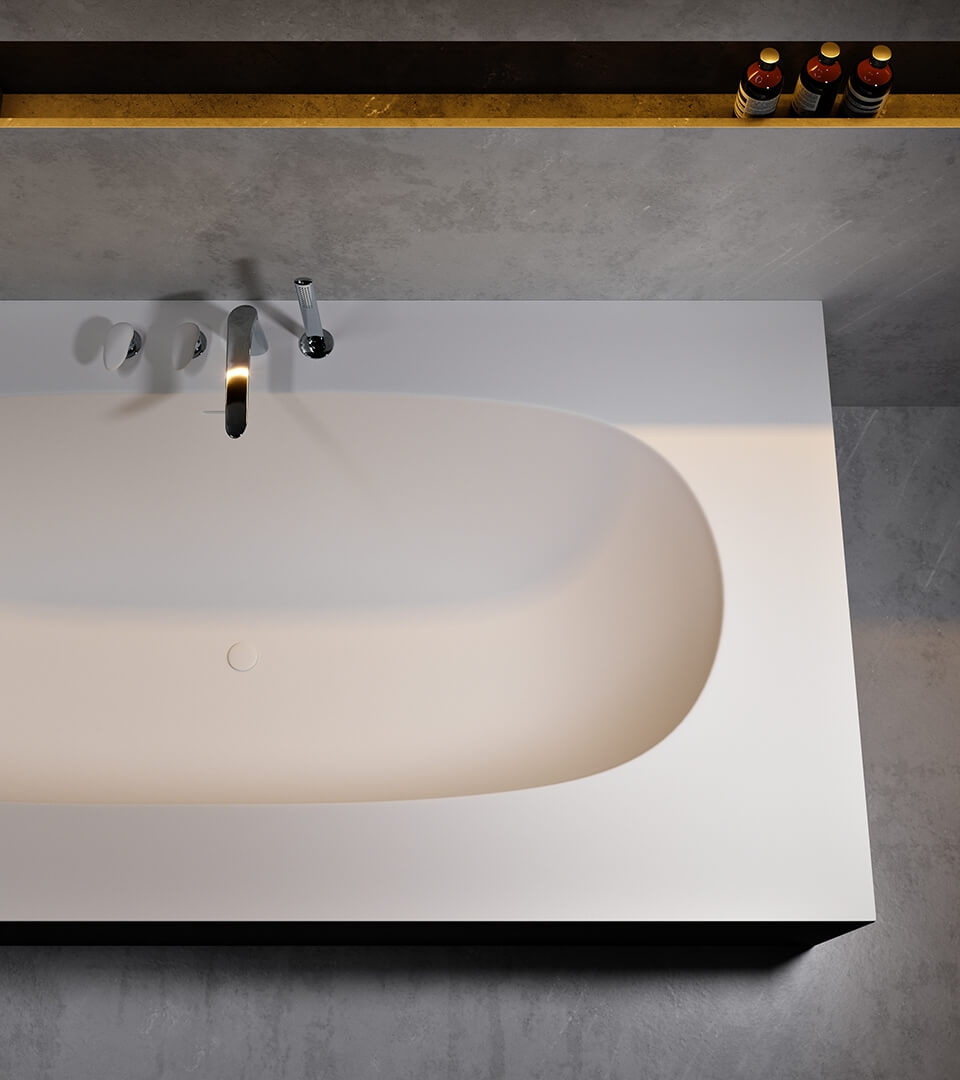
Tackling the Climate Emergency from the Bathroom
If 2019 taught us one thing, it is that the climate emergency is not something we can choose to ignore. In fact, thanks to the likes of Time Person of the Year, the inspirational teenager Greta Thunberg, global awareness of threats to the environment is at its peak.
Here at Riluxa, whilst we like to believe that our products help people to live a better quality of life, we’re very aware that quality of life also means ensuring the world acts right now to adjust its behaviours and become more environmentally responsible.
Globally, fresh water is becoming increasingly scarce and, in some regions (just look to Australia right now), it is scarcer than in others. Plus, the energy used to heat the water (whether natural gas or electricity) is still mostly generated by fossil fuels. So, whilst we are individually unable to bring immediate change to the way our world is powered, there are things we can do right now to lessen the impact of our species on the planet. Including in the bathroom.
Of course, we're not saying that any of the below suggestions to help you be a more responsible bathroom user are going to reverse global warming. Rather, what they represent is a step in the right direction. But it is hugely important that we take these suggestions with the utmost seriousness, because only if we all implement them now will they have the necessarily compound impact of a global effort.
We thank you in advance for taking the time to read them.
Make taking a bath a luxury
We talk about luxury a lot in our marketing materials. But let’s take a moment to remember the meaning of the word. It’s something special; something beyond the ordinary; something that isn’t everyday. And, when it comes to taking a bath, that’s exactly how it should be treated.
The average bath uses between 114 and 190 litres of water whereas the average 10-minute shower using a low-flow shower tap uses 95 litres of water. So taking a bath should be something you do to treat yourself – not something you do every day as a matter of course. It’s a treat for the end of your working week or a lazy Sunday afternoon. Or it’s playtime for your infant children and, of course, bathing two kids together certainly saves on water.
When you fill the tub, maybe don’t fill it to the brim. Have you ever run so much hot water in there that you had to empty some out to make room for the cold? OK, so think harder about that and don’t leave the bath running while you go off about your business. Be mindful that the water is flowing. You can make bathing a luxury without making it an extravagance.

Take shorter showers
If a 10-minute shower uses 95 litres of water, it goes without saying that a 5-minute shower will use half that amount. That’s around a quarter of the average amount it takes to fill a bathtub. It may sound like an unfeasible amount of time to spend cleaning oneself but, if you’re efficient, it is completely doable. Believe us, because we tested it for this very article.
Taking a shorter shower is all about multitasking. Wet your hair under the tap, hands-free, while pouring out the shampoo. Wash your face and body while rinsing your hair. In fact, try washing your hair less frequently – if your hair is the dry type, you don’t actually need to do it every day. Don’t stay in the shower purely for the sake of enjoying the feeling of the water on your skin. Yes, it feels amazing, but having an inhabitable planet also feels amazing, doesn’t it? So how about making a greater effort to just wash and go?
Do you know, we use over 4 million cubic metres of water every single day across the world? Imagine if we could quarter that amount? The impact on the planet would be huge, so just give it a try.
Use cold water
This might not sound like a thrilling idea, but before you write it off, let’s consider a few facts about taking cold showers. First of all – and you’ll like this – it promotes fat loss. Yes, cold showers activate brown fat (the “good fat”), which burns calories to keep the body warm.
Cold showers also improve your immunity by increasing the speed of your metabolism and the amount of white blood cells, which protect you from getting sick. They boost the lymphatic system so that it works harder to carry out waste from your cells, too, which reduces the risk of infection.
Did you know that even your nervous system’s resilience to stress can be improved by taking cold showers and, because they stimulate the ‘blue spot’ on the brain (the locus coeruleus, which regulates physiological responses to stress), they can also alleviate depression?
The list goes on. Cold showers increase testosterone levels, improve fertility in men, promote faster muscle recovery, reduce the risk of losing too many natural oils in the hair and on the skin (so you’ll look better) and they help you to sleep better.
Above all, taking cold showers will reduce your carbon footprint by a massive amount and, if we all start doing it, our global reliance on fossil fuels will fall dramatically.
Flush when necessary
Not the nicest subject to ponder, we know, but a necessary one. Because flushing the toilet is actually the biggest waste of water in the entire home. An older loo can use up to 25 litres in a single flush, so the first thing you need to do is make sure you have a low-flow toilet, as they only use around 6 or 7 litres, which is miniscule by comparison. But that doesn’t give you the excuse to just keep on flushing.
The truth is, whilst it’s not the most pleasant thing to have hanging around the bathroom, a ‘number one’ is completely sterile and harmless. And our toilets have lids for a reason, so just put it down and hide it away.
If you’re worried about what your guests will think, why don’t you just make a thing of it: “We’re trialling not flushing ‘number ones’ in an effort to be friendlier to the planet. If it’s good enough for the progressives in San Francisco, we figured we might as well give it a shot. So don’t be shocked if, when you lift up the lid, the water isn’t colourless.”
A little humility and willingness to be embarrassed for a few seconds could actually have a positive impact on the future of our world. Own your wee-wee.
Buy responsibly produced furniture
This is something that our company is, of course, acutely aware of. If you take a look through our catalogue, you’ll see that we don’t really do so many acrylic products anymore. The reason for that is, well, they’re a far bigger drain on fossil fuels than Corian®, solid surface or marble.
The interesting thing is that, even though we stock far fewer models, we nevertheless sell far more acrylic bathtubs than any other type. That appears to be because they’re significantly cheaper. But, although you might pay a little less now for your acrylic tub, just be aware that the long-term cost to the environment is far higher.
No, we’re not trying to talk ourselves out of sales and, yes, we realise that some people just cannot afford the luxury of a Corian® or solid surface tub. However, if you are able to afford materials that are comprised of a lower degree of Volatile Organic Compounds (VOCs) – in other words, which do not easily become vapours or gasses when burned – then it’s certainly the more responsible thing to do.
We would love it if, by 2021, we could say that our biggest selling bathtub was made of Corian® or solid surface, because it would mean that our words have resonated.

Build a bathroom that lasts
If you scrimp in the bathroom, the likelihood is that you will have to replace it within a much shorter space of time than if you design and build the bathroom of your dreams. Yes, in this instance, luxury can actually be environmentally friendly.
Let’s take the above example of acrylic, again. If you damage an acrylic bathtub, that’s basically it – it’s going to stay damaged and you’ll probably want to replace it before too long. Whereas, if you buy a Corian® tub, that tub not only comes with a 10-year guarantee, but it is also easily repairable with little more than a 220-grit sandpaper disc attached to an orbital sander run at a low speed across any cracks in the Corian®.
Same goes for marble. They built the fascia of Marble Arch in London out of it in 1847 and here we are referencing it today. Marble lasts for multiple lifetimes, making it an incredibly sustainable choice for your bathroom design.
Buying well-built products made of materials that aren’t going to let you down is not only the more economical decision in the long term; it is also the more environmentally friendly one. So, rather than getting what you can right here and right now; why not save up a bit until you can get what you want? Or even look responsibly into financing a bathroom that will last, rather than one you’ll need to replace within a few short years.
There are very important decisions we need to start making about our future. They will affect our children; our children’s children; and generations to come. Never was there a more important time to begin acting more responsibly toward the world. So let’s set a great example for our peers and start in our own homes.